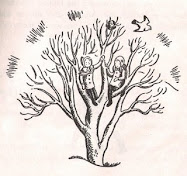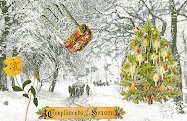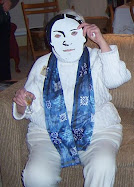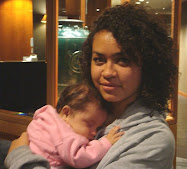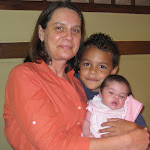I'm a big fan of the French Paper company in Michigan, experts at making uncoated papers, and promoters of off-the-beaten-track design. Now they are offering gift wrap, too, along with other quirky Pop Ink gifts. I ordered some paper called T & Asia, and it came in a wonderful large triangular box that I will be saving – and perhaps covering – soon. In the meantime, I used one sheet to cover this box. I'm lusting after the multi-use paper packs, too
The smaller box is a slider, for holding stamps or something else semi-precious. The Whale is from a French Paper ad, as is the image of the French Paper factory on the T&A box.
Sunday, January 31, 2010
Saturday, January 30, 2010
In Praise of Kevin Barry's 'Fjord of Killary'
There were so many things I liked about Kevin Barry's story, "Fjord of Killary," appearing in The New Yorker this week. It was the first I'd heard of Barry, so there was that: the pleasure of "finding a shiny two-pound coin in a pile of muck," as Elaine Chiew puts it in The Short Review. (Not that the rest of The New Yorker content was mucky: quite the contrary.)
This was the pleasure of discovering a contemporary Irish writer who has an ear for the idioms of the West of Ireland as they might be given out these post-Celtic Tiger days at an old country pub. The protagonist is the owner of the Water's Edge Hotel, a middle-aged poet suffering under the ludicrous indignities of a "long silence" while serving drinks in the lounge bar where he thought he'd find purpose and a voice. Instead, he's drowning.
There's a psychological turn near the end of the story that nicely follows the pitch-perfect scenarios leading to it, with wilder, increasingly desperate social moments, vivid participants, and a rising sea. An otter is eating the carrot soup, and a black-backed gull tearing the head off its mate. Nature seeps in everywhere, and it is not sentimental and lovely; it is pagan, corrosive, and wild. The tone is at times wildly hilarious, perfectly absurd, and absolutely believable: a masterful combination.
The story contains "language." It gives the clientele of the pub a crude and booze-tinged view of the body in words that could be transcribed from conversations I recall overhearing in Irish bars: "It's not," says one old man, "like I'm going to take a lep at the little bitch. My leppin' days are long fuckin' over." The beauty is in the complete context of that phrase, and in that "lep."
The speaker is someone named Caoimhin (Irish for Kevin), and because he's a writer, it is tempting to imagine this is a "true story," and that we could find Kevin Barry tending bar near Galway, suffering from his dashed hopes. That's a nice loop, too – this is a true story of a different kind, crafted from scraps of experience but decidedly not a memoir or confessional tale. In the end, a Caoimhin discovers something profound (and profoundly Irish): the rigors (or rigor mortis?) of acceptance. The final epiphany is an energizing version of Irish Zen, an active high-tides-be-damned acceptance of the tragic and the absurd. I loved the last sentence.
 Tracking down the craic about Barry, I surfed through a few Irish reviews. Here is an interview, by Eimear Ryan, and another in The Limerick Leader, from the town where Barry once was a journalist. And another interview in The Short Review, where the topic is Barry's There Are Little Kingdoms, a collection of short stories published in 2007 that subsequently won the Rooney prize for Irish Literature. Another here at Cheebah by Eilis Ni Leathlobhair. They note the author's kinship to J.M. Synge and to Beckett, and to the self-deprecating humor of Flann O'Brien (Brian O'Nolan), also a master of the form.
Tracking down the craic about Barry, I surfed through a few Irish reviews. Here is an interview, by Eimear Ryan, and another in The Limerick Leader, from the town where Barry once was a journalist. And another interview in The Short Review, where the topic is Barry's There Are Little Kingdoms, a collection of short stories published in 2007 that subsequently won the Rooney prize for Irish Literature. Another here at Cheebah by Eilis Ni Leathlobhair. They note the author's kinship to J.M. Synge and to Beckett, and to the self-deprecating humor of Flann O'Brien (Brian O'Nolan), also a master of the form. There's another Kevin Barry, of course: an early Irish Republican who was executed by the British in 1920, celebrated in a ballad, and given a state funeral in 2001 with nine other "volunteers from the War of Independence" ("The Forgotten Ten"), all of whom were eventually moved from Mountjoy Prison to be re-interred in Dublin at Glasnevin Cemetery. That's quite a lot of history to have echo in your name.
Friday, January 29, 2010
Grow your Own Food: a poster by PJ Chmiel at Lost River Community Co-op
Just an image today, made from a photo of a poster by PJ Chmiel (a vegan graphic designer) that I saw on a wall at Indiana's newest food co-op, Lost River Market and Deli (also known as Lost River Community Co-op) in Paoli, Indiana. I like the poster, and it's message, and went at it with a clone stamp, mostly to attack the flash flaws in the photo. (Is that a sheep standing in the top front yard, or the lonely family poodle? No, it's a man on a motorized lawn mower!)
I'm intrigued by the word permaculture there:
Permaculture is a design system for creating sustainable human environments. Anyone can do it! (But we still have a lot to learn.)
I'm intrigued by the word permaculture there:
Permaculture is a design system for creating sustainable human environments. Anyone can do it! (But we still have a lot to learn.)
Thursday, January 28, 2010
Ways of Reading the Bible ghazal, by Marie Deer
Marie Deer wrote this ghazal while on a retreat with Women Writing for (a) Change Bloomington, at the White Violet Center for Eco-Justice at Saint-Mary-of-the-Woods College near Terre Haute, Indiana.
Turns out that her father was born in Terre Haute, although she herself had never been there. Instead, as a child, she lived in Congo, where her parents were Baptist missionaries. Marie eventually married a Persian German Jew; we have a mutual friend who (in his doggerel) refers to their two sons as "Congolese Persian Baptist Jews." I like the reminder that identity is recreated with each generation (often in unexpected hybrid ways). I think they might more accurately be called "Hoosier Congolese Persian German Baptist Secular Jews" – but I might just be getting presumptuous here about other people's identities. (Indeed.)
Marie spent time during her childhood as a scribe for her father, Donald Deer, who was translating the Bible into a Congolese trade language, Kituba, and perhaps other African languages, too (see the comments to this post for more information). Every so often she listened to a favorite family LP of Alice in Wonderland on the phonograph, too. These are the kinds of childhood activities that form the ideal curriculum for an aspiring poet. Marie's father recently celebrated his 8oth birthday.
So, for your pleasure, another wonderful ghazal, along with an image of a hieroglyphic Bible. (Wish I had one of those.)
Ways of reading the Bible ghazal
Under the covers; at breakfast; out loud: so many ways of reading the Bible.
I look back on my childhood: a life full of days of reading the Bible.
In Strasbourg, high in the air in our newly walled-off living room,
I am a ten-year-old girl whose patience frays at reading the Bible.
On the overstuffed green vinyl chairs we inherited from the Danish consul
My family of four takes turns, sings, and prays while reading the Bible.
We are completely conscientious; no verse or naughtiness, no paradox
Or lineage gets skipped. These are the outlines my father obeys in reading the Bible.
After our family has read through the Bible at least twice all together, I take it
Upon myself to read it alone. I dawdle over Revelations in my forays into reading the Bible.
On the hostel bus I argue with the children of fundamentalists. It was inevitable.
In our family we believe that they cheat and skate through the maze of reading the Bible.
It is our daily bread, our morning routine that in that time seemed leisurely
Before catching a seven-ten bus. Just routine. No applause or bouquets for reading the Bible.
A book full of books. A volume of riddles, histories and transformations.
We both revered it more and held it less sacred than others who laze through reading the Bible.
I'm sorry my children have grown without a family reading routine. It wouldn't have hurt.
If I had it to do again, we would, as they nibble, kibbitz and graze while reading the Bible.
The Book of Ruth. The Book of Esther. Lamentations. Some favorites.
I thought it was daily life and not just a phase, this reading the Bible.
My family singing, reading, praying. My family each with a book. Taking turns reading.
This is Marie's ongoing lifetime memory slideshow that plays of reading the Bible.
Turns out that her father was born in Terre Haute, although she herself had never been there. Instead, as a child, she lived in Congo, where her parents were Baptist missionaries. Marie eventually married a Persian German Jew; we have a mutual friend who (in his doggerel) refers to their two sons as "Congolese Persian Baptist Jews." I like the reminder that identity is recreated with each generation (often in unexpected hybrid ways). I think they might more accurately be called "Hoosier Congolese Persian German Baptist Secular Jews" – but I might just be getting presumptuous here about other people's identities. (Indeed.)
Marie spent time during her childhood as a scribe for her father, Donald Deer, who was translating the Bible into a Congolese trade language, Kituba, and perhaps other African languages, too (see the comments to this post for more information). Every so often she listened to a favorite family LP of Alice in Wonderland on the phonograph, too. These are the kinds of childhood activities that form the ideal curriculum for an aspiring poet. Marie's father recently celebrated his 8oth birthday.
So, for your pleasure, another wonderful ghazal, along with an image of a hieroglyphic Bible. (Wish I had one of those.)
Ways of reading the Bible ghazal
Under the covers; at breakfast; out loud: so many ways of reading the Bible.
I look back on my childhood: a life full of days of reading the Bible.
In Strasbourg, high in the air in our newly walled-off living room,
I am a ten-year-old girl whose patience frays at reading the Bible.
On the overstuffed green vinyl chairs we inherited from the Danish consul
My family of four takes turns, sings, and prays while reading the Bible.
We are completely conscientious; no verse or naughtiness, no paradox
Or lineage gets skipped. These are the outlines my father obeys in reading the Bible.
After our family has read through the Bible at least twice all together, I take it
Upon myself to read it alone. I dawdle over Revelations in my forays into reading the Bible.
On the hostel bus I argue with the children of fundamentalists. It was inevitable.
In our family we believe that they cheat and skate through the maze of reading the Bible.
It is our daily bread, our morning routine that in that time seemed leisurely
Before catching a seven-ten bus. Just routine. No applause or bouquets for reading the Bible.
A book full of books. A volume of riddles, histories and transformations.
We both revered it more and held it less sacred than others who laze through reading the Bible.
I'm sorry my children have grown without a family reading routine. It wouldn't have hurt.
If I had it to do again, we would, as they nibble, kibbitz and graze while reading the Bible.
The Book of Ruth. The Book of Esther. Lamentations. Some favorites.
I thought it was daily life and not just a phase, this reading the Bible.
My family singing, reading, praying. My family each with a book. Taking turns reading.
This is Marie's ongoing lifetime memory slideshow that plays of reading the Bible.
Tuesday, January 26, 2010
God ghazal, by Marie Deer
My friend Marie works with words in many ways: as a writer of novels that no one yet reads (she is a big fan of NaNoWriMo: National Novel Writing Month, each November, and has participated in that for two or three years); as an editor of textbooks and other scholarly writing (she is fluent in several languages, with a linguistics degree from a certain university in New Haven that will today go unnamed); as a writing coach, coaxing those who need to slog through sometimes intimidating projects; as the keeper of a blog; and as a poet.
She is also a fiercely brilliant word gamer, a worthy opponent for anyone daring enough to take her on in Scrabble, Lexulous, Boggle, or other word games, both on-line and at the dining room table. (Serial Susan has been her gaming friend, and it is rumored that Marie has taken down a few noted professional deconstructionists in her day.) I can't do it, I'm hopeless at such things once the heat is on: I need my word games to be very slow and contemplative, as I am apt to go down a rabbit hole and forget that I'm trying to beat either the clock or anyone but myself.
Anyway, that is a long introduction to the piece of writing I am posting today. Marie recently went on a Women Writing for (a) Change Bloomington weekend writers' retreat, and she focused on a favorite form, the ghazal. She's been sharing some of her ghazals the past few days, and gave me permission to post. I think they are very remarkable. I'm happy to serve as her literary agent if there are any book publishers out there looking for a next great poet. (I am also happy to represent my mother, Joyce Kennedy, whose extraordinary manuscript of poems about Shakespeare's female characters, Will's Women, needs a publishing home.)
There is a pattern to the ghazal. Without cheating and reading about it, can you discern what it is?
God ghazal
God has a place, surely, somewhere to be, at least some little nook for God.
And God has a shape, pentagod or octagod or something, or how could I look for God?
In the spaces between us, that's my line, that's my God-is-love theory, so weirdly
I'm always careful of those growing and shrinking spaces, alert and on the hook for God.
God being every gender of course, he/she/they are multidomestic and omnieverywhere,
Mr. and Mrs. God I call them, sitting them down as I tie on my apron and cook for God.
Mr. and Mrs. I call them, serving them all kinds of healthy-as-sin organic wonderful
Goodies they've never seen and they marvel. I'm putting it all in a gaudily illustrated book for God.
For nobody else would I cook and clean and work like this. I've even learned new stuff.
You wouldn't believe the workshops and tutorials and classes I took for God.
Things get in the way, obviously. Kids, work, husband, parents, you-name-it. But sometimes
I just have to broom them all out of the way, get out my little schedule, and rebook for God.
Life gets knotted up. I lose my way. My shoulders and back are tight and I frown.
Life gets knotted up and I have to take it all and undo, unstitch, unhook for God.
People are running everywhere. Max far away, Michel in a book, Felix online.
I want to scoop them together and show them what I've done and say see, look, all that I undertook for God!
Mostly I need to sit in this corner, that corner, some corner somewhere where I can close my eyes.
Sit in a corner, say I am Marie, this continues true, no matter what I forsook for God.
She is also a fiercely brilliant word gamer, a worthy opponent for anyone daring enough to take her on in Scrabble, Lexulous, Boggle, or other word games, both on-line and at the dining room table. (Serial Susan has been her gaming friend, and it is rumored that Marie has taken down a few noted professional deconstructionists in her day.) I can't do it, I'm hopeless at such things once the heat is on: I need my word games to be very slow and contemplative, as I am apt to go down a rabbit hole and forget that I'm trying to beat either the clock or anyone but myself.
Anyway, that is a long introduction to the piece of writing I am posting today. Marie recently went on a Women Writing for (a) Change Bloomington weekend writers' retreat, and she focused on a favorite form, the ghazal. She's been sharing some of her ghazals the past few days, and gave me permission to post. I think they are very remarkable. I'm happy to serve as her literary agent if there are any book publishers out there looking for a next great poet. (I am also happy to represent my mother, Joyce Kennedy, whose extraordinary manuscript of poems about Shakespeare's female characters, Will's Women, needs a publishing home.)
There is a pattern to the ghazal. Without cheating and reading about it, can you discern what it is?
God ghazal
God has a place, surely, somewhere to be, at least some little nook for God.
And God has a shape, pentagod or octagod or something, or how could I look for God?
In the spaces between us, that's my line, that's my God-is-love theory, so weirdly
I'm always careful of those growing and shrinking spaces, alert and on the hook for God.
God being every gender of course, he/she/they are multidomestic and omnieverywhere,
Mr. and Mrs. God I call them, sitting them down as I tie on my apron and cook for God.
Mr. and Mrs. I call them, serving them all kinds of healthy-as-sin organic wonderful
Goodies they've never seen and they marvel. I'm putting it all in a gaudily illustrated book for God.
For nobody else would I cook and clean and work like this. I've even learned new stuff.
You wouldn't believe the workshops and tutorials and classes I took for God.
Things get in the way, obviously. Kids, work, husband, parents, you-name-it. But sometimes
I just have to broom them all out of the way, get out my little schedule, and rebook for God.
Life gets knotted up. I lose my way. My shoulders and back are tight and I frown.
Life gets knotted up and I have to take it all and undo, unstitch, unhook for God.
People are running everywhere. Max far away, Michel in a book, Felix online.
I want to scoop them together and show them what I've done and say see, look, all that I undertook for God!
Mostly I need to sit in this corner, that corner, some corner somewhere where I can close my eyes.
Sit in a corner, say I am Marie, this continues true, no matter what I forsook for God.
Clearing the Mourning, Clearing the Morning
Awake to find a 2-hour delay at the schools, due to icy roads and a bit of new snow. I keep thinking of my nephew Andrew, with his father's cousin brother Aggrey, in the Trobriand Islands to "clear the immediate mourning" for grandmother Sarah. How is that done, I wonder? One more of many skills that Andrew has.
Clearing the mourning, clearing the morning.
As Sarah leaves this world, a new little life unfolds: that of her great-granddaughter Tyemani, born last December 18th in Port Moresby to Suzie and Andrew. Little sister to Thierry and Thealani. Here is Andrew with his youngest child, and other sweet family photos, including one with Grandmother Kathy.
Sometimes it's hard to be far-flung! We'd love to hold this little baby, too, as would her great grandparents in Minnesota. I'm sure Sarah would also have loved to cradle her youngest little great.
Thinking of Suzie in Port Moresby, too, waiting for Andrew's (and Thierry's) returns from their travels, and then listening, with the girls, to their stories. Safe journeys!
Clearing the mourning, clearing the morning.
As Sarah leaves this world, a new little life unfolds: that of her great-granddaughter Tyemani, born last December 18th in Port Moresby to Suzie and Andrew. Little sister to Thierry and Thealani. Here is Andrew with his youngest child, and other sweet family photos, including one with Grandmother Kathy.
Sometimes it's hard to be far-flung! We'd love to hold this little baby, too, as would her great grandparents in Minnesota. I'm sure Sarah would also have loved to cradle her youngest little great.
Thinking of Suzie in Port Moresby, too, waiting for Andrew's (and Thierry's) returns from their travels, and then listening, with the girls, to their stories. Safe journeys!
Labels:
Andrew Lepani,
Sarah Watson,
Suzie Tongia,
Thealani,
Thierry,
Tyemani
Sunday, January 24, 2010
Ripples of Influence from a Small Island Cluster
Here is a photo of Sarah Watson, my sister Kathy Lepani's mother-in-law. She is making a kind of currency or gift exchange used in sagali, memorial services for the departed. These bundles are made from scored banana leaves (also used for grass skirts) and are given in recognition of people who were important to the person who died. (Kathy, please chime in here to explain this more fully, if you wish.) I am sure there will be a lot of work to be done assembling these for Sarah's sagali, as she made so many for others during her lifetime. I like the fact that she has a little make-up bag in this photo...I wonder what she used it for? Look at the beautiful large woven basket, too. Sarah was a woman of regal bearing, wearing bare feet.
My parents wrote the words below. They once had the chance to visit Sarah's village in the Trobriand Islands. The bottom photo is of Sarah on the steps of her house, near her final resting place.
We have such vivid memories of Sarah--such a remarkable person--dignified, humorous, nurturing, generous, the center of her community. We remember the hospitality she showed us when we visited her in Losuia, how she spread a tablecloth on the floor mat in her house, brought out her china and served us incredibly delicious meals of fish (or chicken), greens and yams. We remember her leadership and competence during a sagali we were privileged to witness. We remember her in the dark evenings sitting in her house, child in her lap, telling stories in Kiriwina, the circle of people around her listening and laughing. On our trip by boat to Vakuta, we encountered a daunting storm; Sarah held Genou, sea-sick, in her arms in the hold of the boat. Holding a child is a recurring image of Sarah--it was repeated when Joyce visited her in Alitou with Kathy.
Burying Sarah in front of her house seems most fitting. That was the center of her influence, the influence that rippled out into the world way beyond Losuia.
And my mother, Joyce Kennedy, also wrote a poem, about those ripples of influence.
January 21, 2010
Imagine a village woman who dies on this day.
In the morning she awakens as usual,
moves her old bones around her home
made partly of palm leaf; by evening she is gone.
Put yourself into her past.
Become a child on her tropical island.
Place yourself in this woman’s arms.
The night is black, thick with stars.
Friends and relatives sit around her
in the small space in which she lives.
She is telling stories. You listen half-asleep.
You become part of the story,
moving along in the soft rhythm of her words.
You know that you are safe within these words.
How could you know that sometime in your future,
you will understand that she is the point
in a circle that travels out in ripples,
and that after her death
the ripples will continue to push outward
to reach other places in this world?
Labels:
Joyce Kennedy,
Katherine Lepani,
sagali,
Sarah Watson
In Memory: Sarah Watson of the Trobriand Islands, Papua New Guinea
There has been a death in our far-flung family – my sister's mother-in-law Sarah Watson passed away in the Trobriand Islands of Papua New Guinea, where she lived all of her life. My sister relayed the news:
The day started off normally for her but by early afternoon she was feeling unwell.. She was carried to the health centre where she rested. We're not sure what treatment was provided, likely none but perhaps a saline drip (the extent of available interventions), and then she slipped away peacefully. The health officer said it was heart failure. It's rather sad that she wasn't at home but I think the relatives (Nimoa and others) would have held out hope that something could have been done for her at the health centre. Her body is back at home now and many, many people have congregated in mourning. She will be buried this afternoon before sunset in front of her house--not in the church cemetery, not in Vakuta next to her husband, [Lepani Watson] but in the ground that was her home for so many of her long years and very public and generous life. As you know, there is no morgue in Trobs and custom and commonsense require quick burial. The flights to Trobriands are on Sundays and Wednesdays. Andrew and Aggrey (Charles's cousin brother whom Sarah raised) will travel on Sunday and clear the immediate mourning. We are planning to make a trip in June for her sagali and to put up her gravestone. Sarah would have turned 81 on February 15. It is just short of a year ago that she was with us here in Canberra.
This is a day of quiet reflection, celebrating her remarkable life, and fun and playfulness, celebrating Thierry's 8th birthday.
Thierry is the son of Andrew Lepani, one of Sarah's grandsons. Thierry is on the edge of the boat carrying Sarah, above, along with two other boys from the village. My sister says, "The person poling the boat is a young village boy. I believe it's most likely Justin, son of Wilson, Charles's cousin brother, but I can't quite make him out. The little guy with Thierry is Kennedy, also one of Wilson's sons, named after our father!" Andreas keeps this photo as the wallpaper on his computer. Sarah didn't use a computer, but she lived close to the sea all of her life. Even in old age, she was often barefoot.
The family has been collecting photos of Sarah; here are a few. In many photos she has a child in her lap. Besides her own son and daughter, she raised many other children, and she was a grandmother and great-grandmother. Below, she is with my sister's three children when they were young. And there's a photo of Nimoa, about whom Kathy says: "Nimoa is the first born son of Julie, Charles's sister. Sarah raised him from the time he was a baby, so they are very close. Nimoa always lived in the village with her and he built his house next to hers." There's a photo of Thierry here, too, in traditional dress. The final picture is one of Sarah last year visiting her son Charles's family in Canberra, Australia, standing on Mount Ainslie. (I love the sweater she is wearing there!)
Here in Indiana, far far away, we are also thinking about Sarah, wishing we had met her, and wishing we could be there to participate in the mourning. She had a huge impact on the life in her village, and led a life of great simplicity, complexity, and dignity. Our hearts go out to all of those whose lives she helped stabilize and enrich with her loving attention, day after day.
Saturday, January 23, 2010
Alice in Wonderland, Revisited
Next up for my Ladies' Book Club are Lewis Carroll's Alice's Adventures in Wonderland and Through the Looking Glass. Alice is experiencing a revival these days (she's BIG again) with a new Tim Burton film, featuring Johnny Depp, coming out later this year. I have friends working on an Alice play, too, that sounds quite fascinating: details to follow. In the meantime, settle back for a few minutes to be charmed by this silent film from 1903. It's wonderful, corrosion and all. I will probably like this version better than any other Alice on film.
Rereading the books, I realize that they were far from my favorites as a child – I think they made me anxious. So much rudeness! (Something I still despise.) Random this and random that! That crazy Red Queen! My Alice was suffering a crisis of ontological insecurity that obscured some of the pleasures of the text. I see those (the word play, the wild scenic juxtapositions, Alice's psychic bravado) more clearly now. Whatever else, she is an enduring cultural artifact, adaptable to many times and places. That's as it should be for a girl given to jumping down a rabbit hole, passing bravely through a looking glass.
What are your memories and thoughts about Alice?
Rereading the books, I realize that they were far from my favorites as a child – I think they made me anxious. So much rudeness! (Something I still despise.) Random this and random that! That crazy Red Queen! My Alice was suffering a crisis of ontological insecurity that obscured some of the pleasures of the text. I see those (the word play, the wild scenic juxtapositions, Alice's psychic bravado) more clearly now. Whatever else, she is an enduring cultural artifact, adaptable to many times and places. That's as it should be for a girl given to jumping down a rabbit hole, passing bravely through a looking glass.
What are your memories and thoughts about Alice?
Friday, January 22, 2010
Le'go those Legos! Michael Chabon Sorts
I love this photo of writer Michael Chabon (pronounced, in his words: "Shea as in Shea Stadium, Bon as in Bon Jovi") meticulously sorting his kids' Legos. Chabon is married to writer Ayelet Waldman, author of Bad Mother: A Chronicle of Maternal Crimes, Minor Calamities and Occasional Moments of Grace; she posted this to her facebook page. At least one of their four children, I'm guessing, must be a Lego fan.
(Ayelet had a Bad Mother blog that I linked to above, and now she has a website here. I miss the Bad Mother, where she did mention how all-consuming blogging can be. Ah, yes..that is the danger.)
I just have one – or maybe two – more things to say. First of all, you know he's not doing this for his kids, right? He's plotting his next novel in his head. Or letting go of the writing for awhile with this Montessori procrastination "work job." (God forbid that they also have the K'nex system.)
He's bringing order to the Universe. Somebody has to do it: who better than a novelist?
One small brick at a time.
In 2000, Chabon told The New York Times that he kept a strict schedule, writing from 10 a.m. to 3 p.m. each day, Sunday through Thursday. He tries to write 1,000 words a day. Commenting on the rigidity of his routine, Chabon said, "There have been plenty of self-destructive rebel-angel novelists over the years, but writing is about getting your work done and getting your work done every day. If you want to write novels, they take a long time, and they're big, and they have a lot of words in them.... The best environment, at least for me, is a very stable, structured kind of life."
Actually, that schedule sounds fabulous to me: five days of five hours of uninterrupted writing. Not a bad life. But that was before Ida-Rose was born (2001), followed by Abraham (2003). My guess is that there has been a major infusion of Legos in the interim.
Actually, that schedule sounds fabulous to me: five days of five hours of uninterrupted writing. Not a bad life. But that was before Ida-Rose was born (2001), followed by Abraham (2003). My guess is that there has been a major infusion of Legos in the interim.
My Lego memories: walking into the upstairs playroom in Belgium when my sister's family lived there, to find no furniture, but a mountain of Legos in the center of the room. Most impressive! It's was like the fairy tale, where the princess must turn a mound of grain into gold. (Kathy may have been something of a "bad mother": no parental sorting going on.)
Then there was the sorting I did when Jack was young. (Legos, K'nex, and Playmobile systems).
On a trip to Germany, where my mother-in-law keeps a wooden box with Legos from her sons' childhoods, we made a fairly elaborate construction on the attic floor, but missed the more exotic contemporary pieces; these were mostly bricks in primary colors. Our former neighbors created big Lego worlds while homeschooling (and called it math. which it is! absolutely.) Shopping with Thierry and his dad Andrew at Legoland at the Mall of America, and selecting a special kit for him. That Lego team-building game that happened at a work retreat (you know the one).
Then there was the sorting I did when Jack was young. (Legos, K'nex, and Playmobile systems).
On a trip to Germany, where my mother-in-law keeps a wooden box with Legos from her sons' childhoods, we made a fairly elaborate construction on the attic floor, but missed the more exotic contemporary pieces; these were mostly bricks in primary colors. Our former neighbors created big Lego worlds while homeschooling (and called it math. which it is! absolutely.) Shopping with Thierry and his dad Andrew at Legoland at the Mall of America, and selecting a special kit for him. That Lego team-building game that happened at a work retreat (you know the one).
But here's the rub: the kids always want those new kits, or that's what we are programed to go for. You build the Starship, then go back for a new kit with mostly similar pieces. Very few people actually need new Legos after a year or two. What's harder to get enthused about is returning to the millions of tiny pieces trapped within those intricate storage systems, to create something entirely new, without a specific plan. And yet, the possibilities are clearly endless.
Here is my question for Chabon, Waldman and you: Just think about the process of searching through all of those little drawers, once they are reinstalled in their systems. Does it really facilitate creation? Or is the heap on the floor ultimately better? That's a parental zen koan I have pondered a lot.
There's a lesson in there somewhere: tell me what it is. Leave a comment by clicking on the word COMMENT below...my "random prize generator" will be sending a gift to someone, culled from the plastic storage system of Legos that still lives at our house.
Later: Just home from an opening at the Lilly Library on the campus of Indiana University, where there was a reception for a new exhibition called Treasures of the Lilly Library: Celebrating Fifty Years. Shakespeare, Milton, Darwin ("With the author's best compliments"), and...in the next room, a display of comic books and other texts related to Michael Chabon's The Amazing Adventures of Kavalier & Clay. Here's a bit more information about that book, from Wikipedia:
 Many events in the novel are based on the lives of actual comic-book creators including Jack Kirby (to whom the book is dedicated in the afterword), Stan Lee, Jerry Siegel, Joe Shuster, Joe Simon, Will Eisner, and Jim Steranko. Other historical figures play minor roles, including Salvador Dalí, Orson Welles, and Fredric Wertham. The novel's time span roughly mirrors that of the Golden Age of Comics itself, starting from shortly after the debut of Superman and concluding with the Kefauver Senate hearings, two events often used to demarcate the era.
Many events in the novel are based on the lives of actual comic-book creators including Jack Kirby (to whom the book is dedicated in the afterword), Stan Lee, Jerry Siegel, Joe Shuster, Joe Simon, Will Eisner, and Jim Steranko. Other historical figures play minor roles, including Salvador Dalí, Orson Welles, and Fredric Wertham. The novel's time span roughly mirrors that of the Golden Age of Comics itself, starting from shortly after the debut of Superman and concluding with the Kefauver Senate hearings, two events often used to demarcate the era.
Here is my question for Chabon, Waldman and you: Just think about the process of searching through all of those little drawers, once they are reinstalled in their systems. Does it really facilitate creation? Or is the heap on the floor ultimately better? That's a parental zen koan I have pondered a lot.
There's a lesson in there somewhere: tell me what it is. Leave a comment by clicking on the word COMMENT below...my "random prize generator" will be sending a gift to someone, culled from the plastic storage system of Legos that still lives at our house.
Later: Just home from an opening at the Lilly Library on the campus of Indiana University, where there was a reception for a new exhibition called Treasures of the Lilly Library: Celebrating Fifty Years. Shakespeare, Milton, Darwin ("With the author's best compliments"), and...in the next room, a display of comic books and other texts related to Michael Chabon's The Amazing Adventures of Kavalier & Clay. Here's a bit more information about that book, from Wikipedia:
 Many events in the novel are based on the lives of actual comic-book creators including Jack Kirby (to whom the book is dedicated in the afterword), Stan Lee, Jerry Siegel, Joe Shuster, Joe Simon, Will Eisner, and Jim Steranko. Other historical figures play minor roles, including Salvador Dalí, Orson Welles, and Fredric Wertham. The novel's time span roughly mirrors that of the Golden Age of Comics itself, starting from shortly after the debut of Superman and concluding with the Kefauver Senate hearings, two events often used to demarcate the era.
Many events in the novel are based on the lives of actual comic-book creators including Jack Kirby (to whom the book is dedicated in the afterword), Stan Lee, Jerry Siegel, Joe Shuster, Joe Simon, Will Eisner, and Jim Steranko. Other historical figures play minor roles, including Salvador Dalí, Orson Welles, and Fredric Wertham. The novel's time span roughly mirrors that of the Golden Age of Comics itself, starting from shortly after the debut of Superman and concluding with the Kefauver Senate hearings, two events often used to demarcate the era.
Labels:
Ayelet Waldman,
Charles Darwin,
K'nex,
Lego,
Lilly Library,
Michael Chabon,
Thierry
Thursday, January 21, 2010
The Haiti Project of St. Luke's Episcopal Church
This post has two parts, connected over a broad span of time and space. It's the story of two churches (three, actually) in very different parts of the world, and a woman who is the link between them.
I received a message from someone I've known since childhood, Jane Peck, whom I met when we were both in (beloved) Mrs. Boehmke's class at the (now erased, only a grassy hillside) Oakwood Elementary School in Albert Lea, Minnesota. Jane and I also attended Christ Episcopal Church, on Fountain Lake, associated in my mind with many vivid memory fragments. The winding back staircase up to the nave, the musty ladies' powder room, the icy glass bottles of Orange Crush that were our reward during summer Bible camp, the odor of choir robes, the Sunday in spring when each child was given a red geranium (and the amazing smell that produced), the effort of trying to make sense of the prayers: was it "made well in us" or "may dwell in us" – and what exactly was the difference? That's just the very beginning of a memory flood.
Jane sent along this photo of our confirmation class, taken when we were 11 or 12 years old. She is the first girl on the left, and I am standing beside her in my Groucho Marx glasses and nose. (And my very cool Jackie Kennedy dress.) I don't know if the boys in the photo turned out to be middle school principals, used car salesmen, and insurance guys, as their apparel might suggest, but I like the way they form a tight little fence around the four fierce young brides. We all look so adult by today's childhood standards...but wait? Aren't kids today supposed to be getting too old too rapidly? We look adult in a culturally conservative way, so I guess the photo suggests (or "confirms") a successful transition out of childhood into socially sanctioned maturity.
A few days after receiving this photo – days separated by a natural disaster – I got another message from Jane (via my mother), with a photo of her taken in sometime in the past, in Haiti. She's been involved in a project there through St. Luke's Episcopal church in Minneapolis. I'm including this message, too – a letter explaining the status of the project after the earthquake. It gives a glimpse of the tragic situation in Haiti outside the cities, and points to the perseverance, dedication, and personal engagement required after a disaster of this kind.
It also reminds me of how fortunate I am to still have such a wonderful friend from childhood.
Dear Supporters of the St. Luke’s Haiti Project,
Thank you for your patience. I have been waiting for more information on our school feeding project at St. Patrick’s in Haiti. We still do not know the status of the school or the people in the village. Our project is an Episcopal church partnership. There are several others from Minnesota, as well as over 100 across the US. We in Minnesota have been sharing every shred of information that we receive. This is what we know so far:
1. St. Patrick’s in Tomb Gateau village is quite near the epicenter. It is high in the mountains on the highway between the north coastal town of Leogane and the south coastal town of Jacmel. The highway is impassable. No relief has reached the area.
2. St. Patrick’s is a very small school and church, dependant on a larger church and school about 15 minutes down the mountain. That village and church is called St. Etienne’s (St. Stevens). This is where we stayed both years at the minister’s home. We were informed following the quake that the home, school, church have all collapsed and covered the highway.
3. We have received information through an unofficial source that all Episcopal ministers and their families have survived. We hope it is true. No word on the school principal. Luckily, the quake struck at 5 pm and school had been out for several hours.
4. All partnership funds go through the Episcopal complex in the capitol Port au Prince. This complex of cathedral, high school, offices, seminary, convent, has been destroyed. This is one of the reasons it is so hard to get information. (There never was internet, electricity, water, or sewer in St. Patrick’s on the mountain.)
With the destruction of the anchor church, St. Etienne, our school site may need to be put on hold, as it will be quite hard to administrate. We will then switch to a more accessible Episcopal school partnership where we can feed children, and if we surpass the food budget, construct schools.
Partnership projects are small and grassroots, involving the community in the choices and implementation. This is the best way to rebuild. The money is more accountable than in a large organization. We can visit and observe. Remember, the Episcopal Church of Haiti is indigenous, being formed 150 years ago by a church of freed slaves from Boston. All priests are from Haiti, know the culture and language, and live there permanently. Churches provide most of the schools in Haiti.
Send your thoughts and prayers to this unfortunate island. Thanks, Jane
To donate send checks to :
St. Luke’s Haiti Fund c/o Jane Peck
I received a message from someone I've known since childhood, Jane Peck, whom I met when we were both in (beloved) Mrs. Boehmke's class at the (now erased, only a grassy hillside) Oakwood Elementary School in Albert Lea, Minnesota. Jane and I also attended Christ Episcopal Church, on Fountain Lake, associated in my mind with many vivid memory fragments. The winding back staircase up to the nave, the musty ladies' powder room, the icy glass bottles of Orange Crush that were our reward during summer Bible camp, the odor of choir robes, the Sunday in spring when each child was given a red geranium (and the amazing smell that produced), the effort of trying to make sense of the prayers: was it "made well in us" or "may dwell in us" – and what exactly was the difference? That's just the very beginning of a memory flood.
Jane sent along this photo of our confirmation class, taken when we were 11 or 12 years old. She is the first girl on the left, and I am standing beside her in my Groucho Marx glasses and nose. (And my very cool Jackie Kennedy dress.) I don't know if the boys in the photo turned out to be middle school principals, used car salesmen, and insurance guys, as their apparel might suggest, but I like the way they form a tight little fence around the four fierce young brides. We all look so adult by today's childhood standards...but wait? Aren't kids today supposed to be getting too old too rapidly? We look adult in a culturally conservative way, so I guess the photo suggests (or "confirms") a successful transition out of childhood into socially sanctioned maturity.
A few days after receiving this photo – days separated by a natural disaster – I got another message from Jane (via my mother), with a photo of her taken in sometime in the past, in Haiti. She's been involved in a project there through St. Luke's Episcopal church in Minneapolis. I'm including this message, too – a letter explaining the status of the project after the earthquake. It gives a glimpse of the tragic situation in Haiti outside the cities, and points to the perseverance, dedication, and personal engagement required after a disaster of this kind.
It also reminds me of how fortunate I am to still have such a wonderful friend from childhood.
From: Jane Peck
Date: January 19, 2010 1:36:01 PM CST
To: Haiti Supporters List
Subject: Haiti Project after Quake
St. Luke’s Haiti Project Update – Jane Peck, 1/19/2010
Dear Supporters of the St. Luke’s Haiti Project,
Thank you for your patience. I have been waiting for more information on our school feeding project at St. Patrick’s in Haiti. We still do not know the status of the school or the people in the village. Our project is an Episcopal church partnership. There are several others from Minnesota, as well as over 100 across the US. We in Minnesota have been sharing every shred of information that we receive. This is what we know so far:
1. St. Patrick’s in Tomb Gateau village is quite near the epicenter. It is high in the mountains on the highway between the north coastal town of Leogane and the south coastal town of Jacmel. The highway is impassable. No relief has reached the area.
2. St. Patrick’s is a very small school and church, dependant on a larger church and school about 15 minutes down the mountain. That village and church is called St. Etienne’s (St. Stevens). This is where we stayed both years at the minister’s home. We were informed following the quake that the home, school, church have all collapsed and covered the highway.
3. We have received information through an unofficial source that all Episcopal ministers and their families have survived. We hope it is true. No word on the school principal. Luckily, the quake struck at 5 pm and school had been out for several hours.
4. All partnership funds go through the Episcopal complex in the capitol Port au Prince. This complex of cathedral, high school, offices, seminary, convent, has been destroyed. This is one of the reasons it is so hard to get information. (There never was internet, electricity, water, or sewer in St. Patrick’s on the mountain.)
WHAT NEXT FOR OUR PROJECT?
First we wait until the main church organization is restored and money and communication can flow. We will be involved in the rebuilding phase. This phase may begin in the spring. WE WOULD APPRECIATE YOUR DONATIONS TOWARDS RESTORING OUR CHILDREN'S FOOD PROGRAM. ONCE WE HAVE FUNDS FOR A YEAR OF FOOD, THE MONEY WILL GO TO REBUILD SCHOOLS.
With the destruction of the anchor church, St. Etienne, our school site may need to be put on hold, as it will be quite hard to administrate. We will then switch to a more accessible Episcopal school partnership where we can feed children, and if we surpass the food budget, construct schools.
Partnership projects are small and grassroots, involving the community in the choices and implementation. This is the best way to rebuild. The money is more accountable than in a large organization. We can visit and observe. Remember, the Episcopal Church of Haiti is indigenous, being formed 150 years ago by a church of freed slaves from Boston. All priests are from Haiti, know the culture and language, and live there permanently. Churches provide most of the schools in Haiti.
Send your thoughts and prayers to this unfortunate island. Thanks, Jane
To donate send checks to :
St. Luke’s Haiti Fund c/o Jane Peck
4221 Dupont South
Mpls. Mn 55409
Wednesday, January 20, 2010
Rotorbrain: Color Theory and Other Interactivities
The first one demonstrates how context influences our perception of colors. (You manipulate sliders to see how this works.)
The second demonstrates how color can influence our spatial perception.
This is a very rich, deep and remarkable website, where you can jump to "another damnable blog" (waxing prolix), and find wonderful photos by David Hilbert from the Galapagos Islands, set to music.
(By the way: Why is it that when my Ladies' Book Club gets onto something, such as reading Darwin, I then run into Darwin at every turn? In the latest issue of The New Yorker, for example, Anthony Lane discusses a new film about Darwin, "Creation," by Jon Amiel).

 Foote makes light sculptures (such as this Cage Lamp), invents things (a micro rhythm orchestra, electronic color goggles, mapping code, robotic avatars for desktop teleconferencing – the array of creations is brain-rotoring, indeed. Art meets science meets design meets exceptional curiosity and (dare I venture?) brilliance. The photo here of some of his light art is by Michael Prados.
Foote makes light sculptures (such as this Cage Lamp), invents things (a micro rhythm orchestra, electronic color goggles, mapping code, robotic avatars for desktop teleconferencing – the array of creations is brain-rotoring, indeed. Art meets science meets design meets exceptional curiosity and (dare I venture?) brilliance. The photo here of some of his light art is by Michael Prados. Perhaps my favorite page, for personal reasons (at least tonight) is a very simple one, from the Interactivities page:
For Marie (hint: use the mouse). I have a good friend with that name, and suspect that she may enjoy clicking and scrolling over there!
There's even a Hope-Fear Meter light sculpture: that seems timely and relevant today. (Isn't this a fabulous photo?)
Tuesday, January 19, 2010
Felt Flames, Inspired by Josef and Anni Albers
I'm not entirely sure what to call these little seed bird flame things, made from scraps of wool felt stuffed with wool roving, but they started to proliferate last year around Christmas, and I've made quite a few since then. As gifts, and as a kind of Josef Albers color study (and as a form of meditation).
Some of the colors recede and others pop...it's all about how they interact when next to each other. Come to think of it, that's a lot like people: whether or not you are introverted or extroverted, for example, depends on proximity, relationship, and interaction.

The Wikipedia short form bio: Josef Albers (March 19, 1888 – March 25, 1976[1]) was a German-born American artist and educator whose work, both in Europe and in the United States, formed the basis of some of the most influential and far-reaching art education programs of the 20th century.
A student of the Weimar Bauhaus in 1920, Albers had a long career, with his wife, Anni, first at the remarkable Black Mountain College, and then at Yale. He wrote the book Interaction of Color, published by Yale University Press, and started the Josef and Annie Albers Foundation. It's a wonderful legacy.
Here are some of the felt flames next to a mixed-media drawing I made years ago. I only noticed later how they somehow fit together. And there they are below on a line, held with embellished clothespins (another little obsession).
And finally, captured in a green bowl. Here is a quote from Anni Albers that I've decided to make my credo:
Here are some of the felt flames next to a mixed-media drawing I made years ago. I only noticed later how they somehow fit together. And there they are below on a line, held with embellished clothespins (another little obsession).
And finally, captured in a green bowl. Here is a quote from Anni Albers that I've decided to make my credo:
"A longing for excitement can be satisfied without external means; for creating is the most intense excitement one can come to know."
Labels:
Anni Albers,
decorated clothespins,
felt craft,
josef Albers
Monday, January 18, 2010
In Dreams Begin Responsibility: Martin Luther King Day 2010
The phrase is sometimes quoted as "In Dreams Begin Responsibilities," the title of a frequently anthologized short story by Delmore Schwartz. In one of the PBS American Masters series documentaries, the rock musician Lou Reed (a former student of Schwartz), talks about the influence the poet and writer had on him as an artist. Reed calls it "the best short story I'd ever read."
I haven't yet read it, but would like to now. Wikipedia summarizes this way:
The story tells of an unnamed young man who has a dream that he is in an old-fashioned movie theater in 1909. As he sits down to watch the film, he starts to realize that it is a motion picture documenting his parents' courtship. The black-and-white silent film is of very poor quality, and the camera is shaky, but nonetheless he is engrossed. Soon the young man starts to get upset. He yells things at the screen, trying to influence the outcome of his parents' courtship and the other people in the audience begin to think he is crazy. Several times the character breaks down. In the end he shouts at his parents when it appears they are going to break up, and he is dragged out of the theater by an usher who reprimands him. The animadversion is important to the story, as it reveals a bit of the character's insecurity. In the end, the character wakes up from his dream and notes that it is the snowy morning of his twenty-first birthday.
(Schwartz's own parents divorced when he was nine, an event that is said to have had a profound impact on him.) LOVE this pic of Delmore at an angle in his chair, with all those books at angles and odds, too. And this other photo of him with his bookish cohort.
Here is Yeats' poem:
"In dreams begins responsibility."
Old Play.
Old Play.
"How am I fallen from myself, for a long time now
I have not seen the Prince of Chang in my dreams."
Khoung-fou-tseu.
I have not seen the Prince of Chang in my dreams."
Khoung-fou-tseu.
PARDON, old fathers, if you still remain
Somewhere in ear-shot for the story's end,
Old Dublin merchant "free of ten and four"
Or trading out of Galway into Spain;
And country scholar, Robert Emmet's friend,
A hundred-year-old memory to the poor;
Traders or soldiers who have left me blood
That has not passed through any huxter's loin,
Pardon, and you that did not weigh the cost,
Old Butlers when you took to horse and stood
Beside the brackish waters of the Boyne
Till your bad master blenched and all was lost;
You merchant skipper that leaped overboard
After a ragged hat in Biscay Bay,
You most of all, silent and fierce old man
Because you were the spectacle that stirred
My fancy, and set my boyish lips to say
"Only the wasteful virtues earn the sun ";
Pardon that for a barren passion's sake,
Although I have come close on forty-nine
I have no child, I have nothing but a book,
Nothing but that to prove your blood and mine.
Somewhere in ear-shot for the story's end,
Old Dublin merchant "free of ten and four"
Or trading out of Galway into Spain;
And country scholar, Robert Emmet's friend,
A hundred-year-old memory to the poor;
Traders or soldiers who have left me blood
That has not passed through any huxter's loin,
Pardon, and you that did not weigh the cost,
Old Butlers when you took to horse and stood
Beside the brackish waters of the Boyne
Till your bad master blenched and all was lost;
You merchant skipper that leaped overboard
After a ragged hat in Biscay Bay,
You most of all, silent and fierce old man
Because you were the spectacle that stirred
My fancy, and set my boyish lips to say
"Only the wasteful virtues earn the sun ";
Pardon that for a barren passion's sake,
Although I have come close on forty-nine
I have no child, I have nothing but a book,
Nothing but that to prove your blood and mine.
January 1914.
That's a long way from Martin Luther King's "I Have a Dream" speech, and from the headaches facing Obama. The common theme? Something to do with legacy, with the traces of history inherited from one's forebears. The specific challenge of shouldering the burden of "the dream," in all of its ambiguity. The film of the past ("screen memories," as Freud would describe them) that affect our Ability to Respond. The sense of "falling from oneself." The desire to affect both chance and change, and to avoid squandering energy on barren passions.
As Martin Luther King, Jr. put it in a letter from the Birmingham jail:
"We must use time creatively, in the knowledge that the time is always ripe to do right."
Sunday, January 17, 2010
Print Magazine: Obsessions and Information Processing
One of my favorite websites is that of Print magazine, a publication now celebrating 70 years. The tagline: Design for Curious Minds. (Love that.)
The magazine itself is beautiful – a model of interesting, clean design, with current examples of outstanding magazine, book, and print design, articles exploring the history of print, and news about conceptual and technological trends. But here's is how the editors describe it (they do a better job):
At the website, you only get a teaser about the current issue: the magazine has a life of its own (and you can buy back issues). You do get other features, though, including an Image of the Day archive. As I write, here is the current image:
(Nice. They seemed to know it would go with my elenabella header.) There are videos, live feeds, resources for artists, and links to wonderful blogs, including The Daily Heller by Steven Heller of the School of Visual Arts, where the feature today is "Could It Be Any Worse for Magazines?" He uses this image from a doctor's office to consider the further doom of magazines. (God forbid that they remove them from the waiting room. Cancel my annual appointments, please.)
There's also a weekly feature called Obsessions by Patric King, owner and principal at House of Pretty, Ltd. in Chicago. I found the article on January 11th to be especially interesting, as it may read as an explanation (to someone like Declan Kiberd) of how visual types process information. It's an answer to the final paragraph quoted in Kiberd's review yesterday, about the folly of sensory overload.
King talks about multi-tasking in the context of a book given by his mother:
...the thing that really caught my interest was the note Mom sent along with it: “Keep this where you’ll browse it idly.”
The magazine itself is beautiful – a model of interesting, clean design, with current examples of outstanding magazine, book, and print design, articles exploring the history of print, and news about conceptual and technological trends. But here's is how the editors describe it (they do a better job):
Print is a bimonthly magazine about visual culture and design. Founded in 1940 by William Edwin Rudge, Print is dedicated to showcasing the extraordinary in design on and off the page. Covering a field as broad as communication itself—publication and book design, animation and motion graphics, corporate branding and rock posters, exhibitions and street art—Print covers commercial, social, and environmental design from every angle. Engagingly written by cultural reporters and critics who look at design in its social, political, and historical contexts, Print explores why our world looks the way it looks, and why the way it looks matters.
At the website, you only get a teaser about the current issue: the magazine has a life of its own (and you can buy back issues). You do get other features, though, including an Image of the Day archive. As I write, here is the current image:
(Nice. They seemed to know it would go with my elenabella header.) There are videos, live feeds, resources for artists, and links to wonderful blogs, including The Daily Heller by Steven Heller of the School of Visual Arts, where the feature today is "Could It Be Any Worse for Magazines?" He uses this image from a doctor's office to consider the further doom of magazines. (God forbid that they remove them from the waiting room. Cancel my annual appointments, please.)
There's also a weekly feature called Obsessions by Patric King, owner and principal at House of Pretty, Ltd. in Chicago. I found the article on January 11th to be especially interesting, as it may read as an explanation (to someone like Declan Kiberd) of how visual types process information. It's an answer to the final paragraph quoted in Kiberd's review yesterday, about the folly of sensory overload.
King talks about multi-tasking in the context of a book given by his mother:
...the thing that really caught my interest was the note Mom sent along with it: “Keep this where you’ll browse it idly.”
So genius. Mom knows I’m a multi-tasker, one who reads while watching television and listening for email, instant messenger, Facebook, and Twitter notifications. She also knows how I learn: I watch a lot of information channels as a first pass, marking things I want to read later. On a second pass, I read deeper, marking items again. On a third pass, an item becomes a subject for research and I Google it to death.
Since Mom understands how I ingest information, she simply told me to keep the book by the living room TV where I can open it anywhere, browse, and begin adding its pages to my filtration method. She didn’t tell me to read it in a disciplined way; she knew that would never happen. Being a retired teacher with some teaching of gifted classes under her belt, she knew to just toss it out there and let it work. How interesting that there are many different methods of learning at our disposal that we may not have thought to use.
Saturday, January 16, 2010
Declan Kiberd on the Lure of Books: (Re)reading with Eileen Battersby
Everyone should have at least one friend who vigorously resists contemporary modes of communication, yet remains connected in profound and genuine ways. For me, that friend is Declan Kiberd, professor of English at University College Dublin. He doesn't have email, certainly doesn't twitter, and (according to his daughter Amy) "will NEVER submit to a mobile!" Phone, that is. I think he writes his many books in a longhand scrawl, covering legal pads with carefully formulated observations. If you write him a letter, and send it by post, he just might write back – if you have something meaningful to say. The entire world seems to interest him.
("You won't find him surfing the Internet," says Amy. "He calls it a 'download.'")
I wrote about Declan last March 18th, after the amusing experience of finding a facebook page dedicated to a Declan Kiberd Appreciation Society. Needless to say, he does not do facebook. (Here's a post about Kiberd at Anderson Brown's Literary Blog, a link picked up at that facebook page.) But he does write sometimes for The Irish Times, and today this review came my way, via Serial Susan, via Richard Rose, via baseball writer Ann Bauleke (author of "The Puckett Principle").
In this review, Kiberd looks at Second Readings 52: From Beckett to Black Beauty by Eileen Battersby (Liberties Press). A voracious and enthusiastic reader, Battersby looks back at 52 books she first encountered at a younger age. Kiberd writes:
The final thought is this one:
I'm passing this along like a lucky chain letter: Read this review and you might just be inspired to (re)read 2 to 52 books in the next year: that could certainly change your life. Connect with story the old-fashioned way, with that hand held device once known as a book.
("You won't find him surfing the Internet," says Amy. "He calls it a 'download.'")
I wrote about Declan last March 18th, after the amusing experience of finding a facebook page dedicated to a Declan Kiberd Appreciation Society. Needless to say, he does not do facebook. (Here's a post about Kiberd at Anderson Brown's Literary Blog, a link picked up at that facebook page.) But he does write sometimes for The Irish Times, and today this review came my way, via Serial Susan, via Richard Rose, via baseball writer Ann Bauleke (author of "The Puckett Principle").
In this review, Kiberd looks at Second Readings 52: From Beckett to Black Beauty by Eileen Battersby (Liberties Press). A voracious and enthusiastic reader, Battersby looks back at 52 books she first encountered at a younger age. Kiberd writes:
FIRST IMPRESSIONS are lasting, but second readings can transform a person from one imprisoned by an experience to one who can contain and even transcend it. That is a central intuition of psychoanalysis. Revisiting a past moment, at which a life may have got snagged, allows a person to live more fully through the missed elements of that moment and then to move on.
There is another kind of second reading too, which allows us to experience all over again a feeling of unqualified pleasure. If every book is in some way a second reading of a life, then the great novels of the world capture that life most abundantly.
A piece of music can suddenly restore for us the lost world in which we first encountered it, and so also can a book. But to that recaptured experience is added a deeper consciousness of its meaning over time, along with a tender sense of the innocence of our initial responses.
Of nothing may this be more true than of books. CS Lewis once said that a story worth reading at the age of 10 will also be worth rereading at the age of 50. In that later venture, it is our prior selves, as well as the text, that we reread. And what we find is how deeply, at all stages, it has been reading us.
The final thought is this one:
What is even more admirable is that, unlike so many people who read nowadays solely for exam courses or for other practical purposes, she reads for pleasure – in story, in shaped sentences, in the magic of a word or an image. It’s more than 70 years since Walter Benjamin wondered whether the children of the future would enjoy “the exacting silence of a book”. Since then a whole generation has been turned outward, away from interior exploration, by iPods, Playstations and MTV. Some can’t even contemplate writing an essay without the sound of music or the flicker of images in the background. There is something faintly scandalous and wonderfully anachronistic about Ms Battersby’s pursuit of literary pleasure in a culture too often characterised by a search for mere sensations.
I'm passing this along like a lucky chain letter: Read this review and you might just be inspired to (re)read 2 to 52 books in the next year: that could certainly change your life. Connect with story the old-fashioned way, with that hand held device once known as a book.
Subscribe to:
Posts (Atom)

























































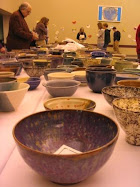
































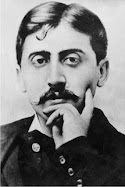






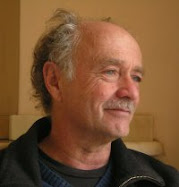











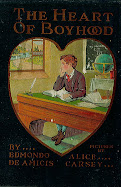





















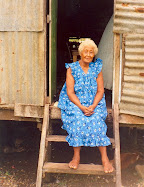





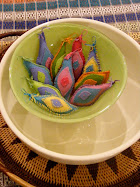






























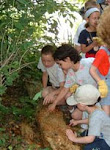.jpg)














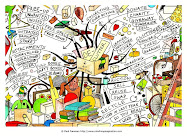












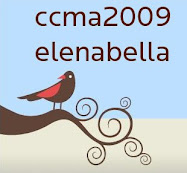




























































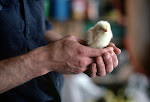
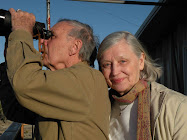
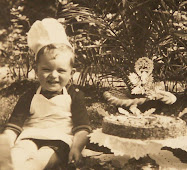














































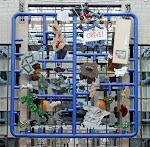.jpg)








